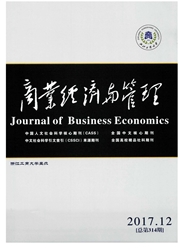

 中文摘要:
中文摘要:
供给侧改革的重点在于优化劳动力、资本和科技投入等要素的配置,而民营经济是中国经济转型的重要引擎,文章从供给侧视角研究了1992—2014年民营经济增长的要素配置效率及其时空演变轨迹。结论如下:从时间角度看,民营经济增长表现为资本与技术双驱动特征,且资本与技术呈现动态“螺旋式”交替状态,劳动驱动强度在2008年后有所上升;在空间分布上,民营经济增长空间重心偏向东南地区,资本重心在近年来开始转向中部地区,劳动力重心偏向东部地区,技术重心偏向东南地区;在区域范围内,各区域民营经济增长类型均以资本驱动型为主,长三角和东南沿海地区的科技创新和人力资本优势并未显现,东北经济区民营经济增长整体效应最低。
 英文摘要:
英文摘要:
The focus on supply-side reform is optimizing the allocation of labor, capital, technology input and other factors, and the private economy is an important engine of China's economic transformation, so this paper studies the factor allocation efficiency of private economic growth and its spatial and temporal evolution track from the perspective of supply side. The results indicate :From the perspective of time, the driving strength of capital and technology shows upward spiral features from 1992 to 2014, and the driving strength of labor increases after 2008 ; From the perspective of space distance, the spatial center of gravity of private economic growth is still partial to the southeast while the spatial center of gravity of labor began to shift the central region; From the perspective of regional scope, the advantages of technology innovation and human capital in the Yangtze river delta and southeast coastal areas has not appeared, and the efficiency of private economic growth in the northeast economic region is the lowest, furthermore, the type of regional private economy growth is mainly the capital driven.
 同期刊论文项目
同期刊论文项目
 同项目期刊论文
同项目期刊论文
 期刊信息
期刊信息
